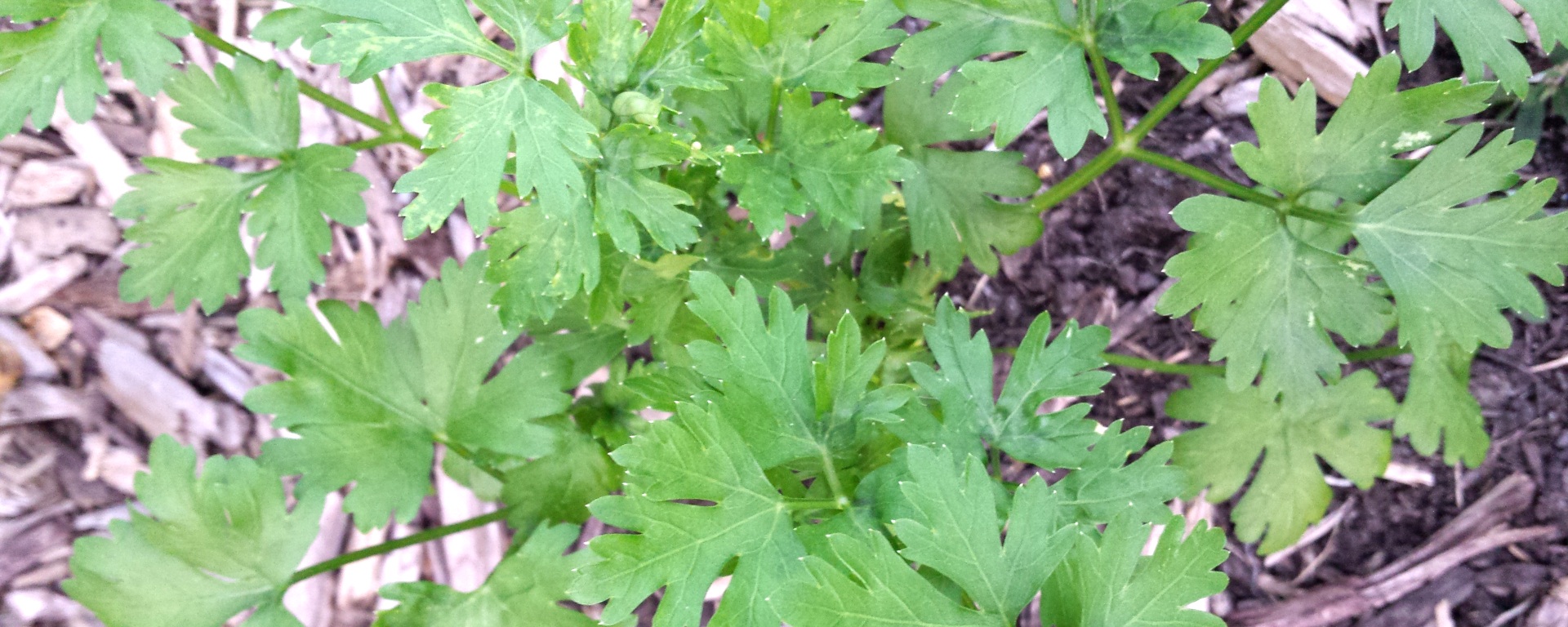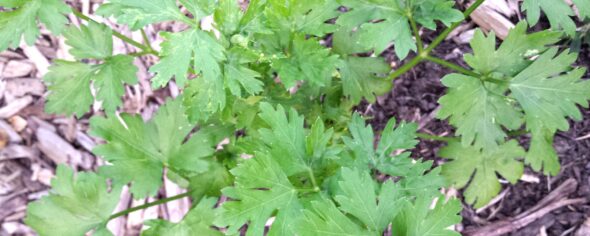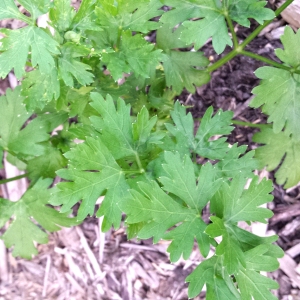 What are finishing herbs is the most common question on herbs I receive. When it comes to cooking, finishing herbs are those delicate herbs that you add at the end of the cooking process to enhance the flavor and freshness of a dish. These herbs are typically added just before serving to prevent them from browning or losing their flavor.
What are finishing herbs is the most common question on herbs I receive. When it comes to cooking, finishing herbs are those delicate herbs that you add at the end of the cooking process to enhance the flavor and freshness of a dish. These herbs are typically added just before serving to prevent them from browning or losing their flavor.
Which Herbs Are Considered Finishing Herbs?
I’ve compiled a short list of what I consider finishing herbs. There’s more and of course the cuisine of food plays a role in what herb would be considered common and most used. As you can imagine, there’s more finishing herbs depending on your preferred cuisine.
-
Fresh Basil: Basil leaves are aromatic and can quickly lose their flavor when exposed to heat. Sprinkle them on top of pasta, pizza, or caprese salads just before serving.
-
Chives: Chopped chives are often used as a garnish for soups, baked potatoes, or omelets. They have a mild onion flavor.
-
Cilantro: Cilantro leaves are commonly used in Mexican and Asian cuisine. They add a fresh, citrusy flavor and are best added just before serving.
-
Parsley: Both curly parsley and flat-leaf (Italian) parsley can be used as finishing herbs. They provide a bright, fresh flavor to a variety of dishes.
-
Dill: Dill is great for adding a mild, anise-like flavor to dishes like fish, potato salad, or cucumber salads. Sprinkle it on top as a finishing touch.
-
Tarragon: Tarragon has a unique anise-like flavor and is often used in French cuisine. It pairs well with chicken and seafood and should be added towards the end of cooking.
-
Mint: Fresh mint leaves are perfect for garnishing desserts, salads, and beverages. They have a refreshing and slightly sweet taste.
-
Cilantro (Coriander) Leaves: In some cuisines, like Indian and Mexican, cilantro leaves are used as a finishing herb. They add a burst of fresh flavor.
Different Cuisines, Different Herbs
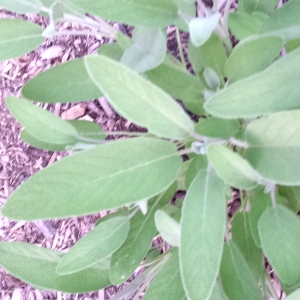 As I mentioned, the choice of finishing herbs can vary depending on the cuisine you’re preparing. For instance, I didn’t include lemongrass but in actuality this herb is considered a common finishing herb in Asia. In essence, the biggest changes in finishing herbs often occur in cuisines with rich culinary traditions. This is where regional ingredients and preferences play a significant role in shaping the flavor profiles of dishes.
As I mentioned, the choice of finishing herbs can vary depending on the cuisine you’re preparing. For instance, I didn’t include lemongrass but in actuality this herb is considered a common finishing herb in Asia. In essence, the biggest changes in finishing herbs often occur in cuisines with rich culinary traditions. This is where regional ingredients and preferences play a significant role in shaping the flavor profiles of dishes.
There are certainly other herbs that can be considered finishing herbs in specific cuisines or for particular dishes. The choice of finishing herbs can indeed vary, and some cuisines have their unique twists. Here are a few additional finishing herbs and examples of cuisines where you might find them:
-
Lemongrass: As I mentioned, lemongrass is a common finishing herb in Southeast Asian cuisines, particularly in Thai and Vietnamese dishes. It adds a bright, citrusy flavor and aroma to soups, curries, and stir-fries.
-
Culantro: Culantro (not to be confused with cilantro!), this herb is also known as “sawtooth herb” or “Mexican coriander,” is used as a finishing herb in Caribbean and Latin American cuisines. It has a similar flavor to cilantro but it is more robust and can withstand the heat a little better, making this a great herb addition to dishes like sofrito and ceviche.
-
Makrut Lime Leaves (or Thai Lime): In Thai and Indonesian cuisines, these lime leaves are used as a finishing herb to add a distinct citrusy and floral aroma to curries, soups, and stir-fries.
-
Dill Pollen: Dill pollen is a delicate finishing touch in Scandinavian cuisine, often used to season gravlax (cured salmon) and other seafood dishes.
-
Sorrel: Sorrel is used in European cuisines, especially in French and Eastern European dishes. It has a tart, lemony flavor and is sometimes added to soups, sauces, and salads as a finishing herb.
-
Epazote: Epazote is used in Mexican cuisine, especially in bean dishes like refried beans. It has a unique flavor and is added at the end of cooking to maintain its distinctive taste.
-
Chervil: While I mentioned chervil earlier, it’s worth noting that it’s a key finishing herb in French cuisine, particularly in dishes like béarnaise sauce and omelets.
Unique Flavor Combos
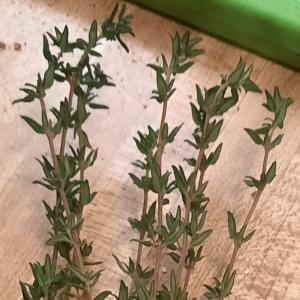 It’s important to note that culinary traditions can vary significantly from region to region within a country, and individual chefs may also have their preferences. However, some cuisines are known for their diverse and unique use of herbs:
It’s important to note that culinary traditions can vary significantly from region to region within a country, and individual chefs may also have their preferences. However, some cuisines are known for their diverse and unique use of herbs:
-
Thai Cuisine: Thai cuisine is renowned for its intricate use of herbs and aromatics, including finishing herbs like Thai basil, cilantro, and makrut lime leaves. These herbs are central to the vibrant and complex flavors of Thai dishes.
-
Mexican Cuisine: Mexican cuisine varies by region, and you’ll find a wide range of herbs used, including cilantro, culantro, and epazote. Each region has its own unique flavor profiles and finishing herb preferences.
-
Southeast Asian Cuisines: Cuisines from countries like Vietnam, Cambodia, and Laos often feature distinctive finishing herbs, which contribute to their unique and refreshing flavors.
-
Mediterranean Cuisines: Mediterranean cuisine is diverse, with variations across countries. Herbs like oregano, rosemary, and thyme are common, but the use of herbs can still differ significantly between regions.
Finishing herbs can elevate the taste of your dishes and give them a beautiful, fresh appearance. Enjoy experimenting with them in your cooking!

